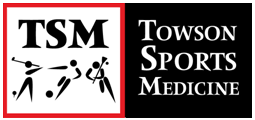 Eating disorders are commonly found in females from adolescence to middle age. Even though there is a lack of statistics from people hiding their problems, many men, children, and older adults also deal with having an eating disorder. An eating disorder is mainly characterized by someone who is terrified of gaining weight, becoming fat and has a strong desire to be thin. The two most common eating disorders seen especially in athletes are anorexia nervosa and bulimia.
Eating disorders are commonly found in females from adolescence to middle age. Even though there is a lack of statistics from people hiding their problems, many men, children, and older adults also deal with having an eating disorder. An eating disorder is mainly characterized by someone who is terrified of gaining weight, becoming fat and has a strong desire to be thin. The two most common eating disorders seen especially in athletes are anorexia nervosa and bulimia.
Anorexia nervosa is mainly caused by a distorted body image and an intense fear of becoming fat or gaining weight. This disorder mostly affects females and can begin in early adolescence. Even though, he/she sees him/herself as being really fat in actuality they are extremely thin usually weighing about 85% or less of his/her expected height and age. To become even thinner, the individual will avoid food or divide food into “safe” or “dangerous” categories. The anorexic will excessively and compulsively exercise even when they become extremely tired, to rid him/herself of any ingested calories. You will also find that the individual will show signs of depression, irritability, low self-esteem but strives for absolute perfection. He/she would rather help others and put others first rather than him/herself. Some individuals might actually be very dependent on loved ones while others claim to be very independent but feel very out of control in every other aspect of his/her life except where food and weight are concerned.
Bulimia is an eating disorder characterized by periods of starvation followed by binging on thousands of calories and the finally purging those ingested calories by vomiting or using laxatives. This is called a binge-purge cycle and is kept very secretive. Mainly an individual with bulimia has little self-worth but believes this is defined by being thin. Unlike anorexics, bulimics are usually of normal or near-normal weight. The individual tries to be a perfectionist by being obedient, over complaint, highly motivated, and successful in both academics and athletics but underneath he/she is depressed, lonely, ashamed, or has a feeling of emptiness. These underlying feelings make individual feel that food is their only comfort. One thing that separates these two disorders is that most bulimics have a problem with impulse control and give little to no consideration for the consequences of his/her actions.
Warning Signs
1) Food Behaviors
- skipping meals
- will not eat in front of others
- may chew food but spits it out before swallowing
- always has an excuse not to eat
- chooses primarily low-fat, low-nutrient foods
- decreases fat intake
- religiously reads food labels
- eats normal or large portions followed by vomiting after being excused from table
2) Appearance & Body Image Behaviors
- wears baggy clothes
- layers clothing to hide body or stay warm
- obsesses about clothing size
- spends a lot of time inspecting self in mirror
- usually finds body part to criticize
3) Exercise Behaviors
- exercises excessively and compulsively
- tires easily but continues to push oneself
- athletic performance suffers
- develop strange eating patterns
- consumes sport drinks and supplements, total caloric intake is less than caloric output
4) Thoughts & Beliefs
- becomes irrational
- denies that anything is wrong
- argues with people who are trying to help
- trouble concentrating
- obsesses about food and weight
- holds to rigid, perfectionistic standards
5) Feelings
- trouble talking about how they feel
- escapes stress by binging or exercising
- moody, irritable, cross, snappish, or touchy
- experiences depression, anxiety, guilt, and loneliness
6) Self-harm & Self-injury
- to cope with above mentioned feelings
- cutting or burning of flesh
- swallow foreign objects
- not consciously trying to commit suicide
- a symptom of Borderline Personality Disorder that co-exists with eating disorders
7) Social Behaviors
- tries to please everyone
- tries to take care of others
- tries to control what and where family eats
- relationships tend to be superficial or dependent
- terrified of true intimacy


